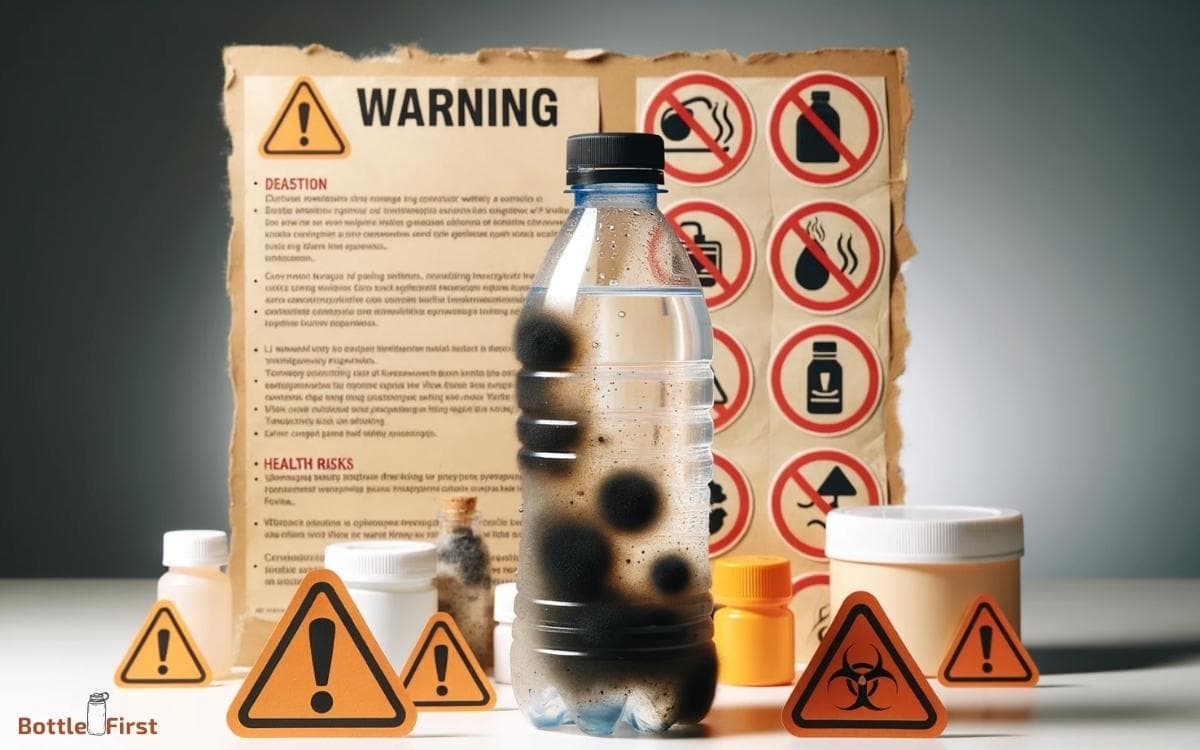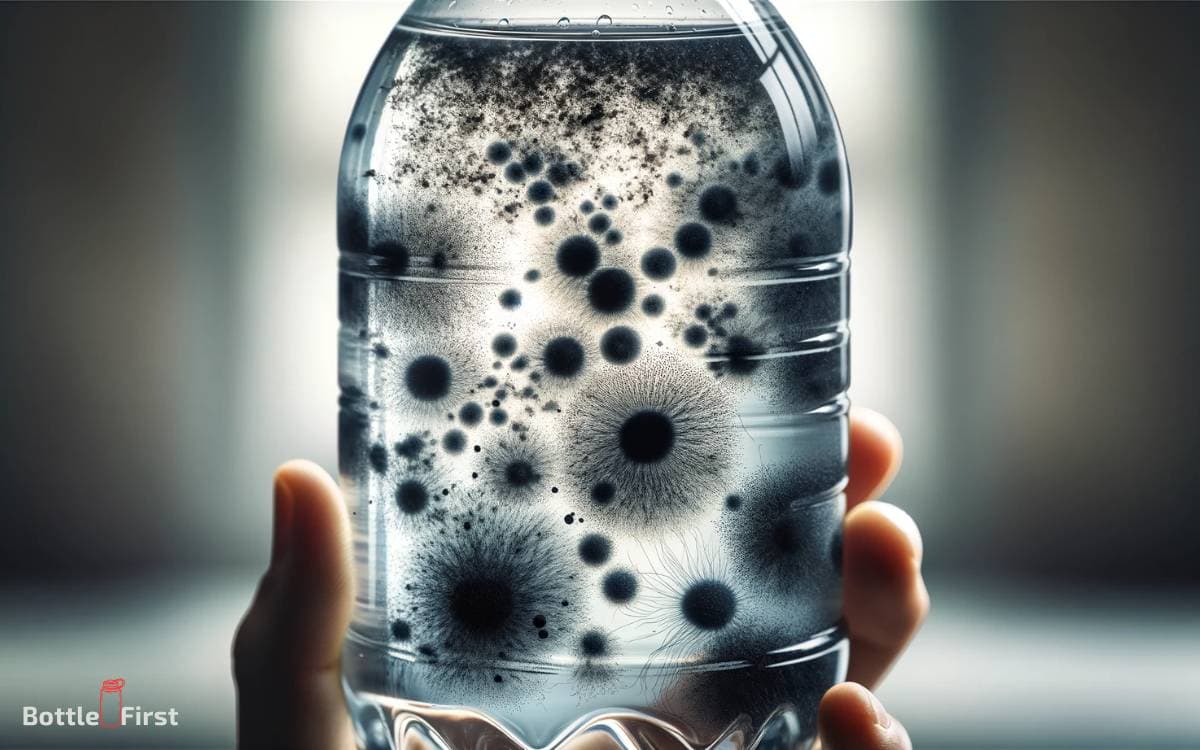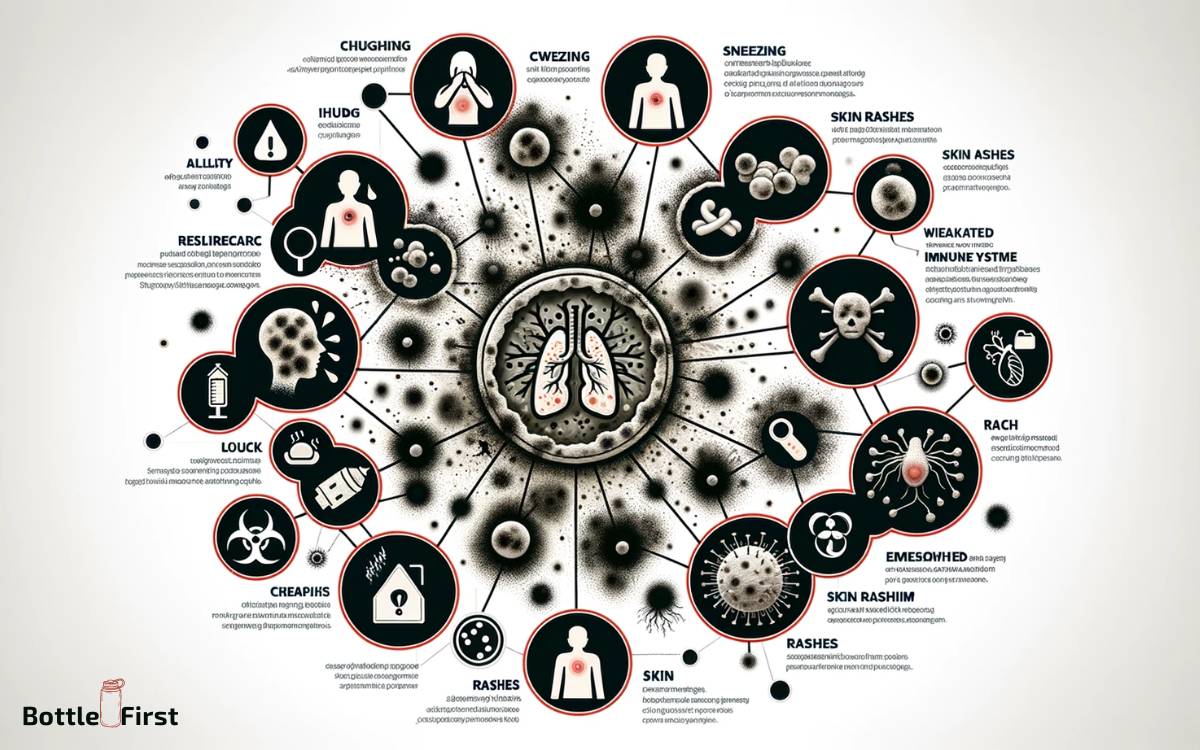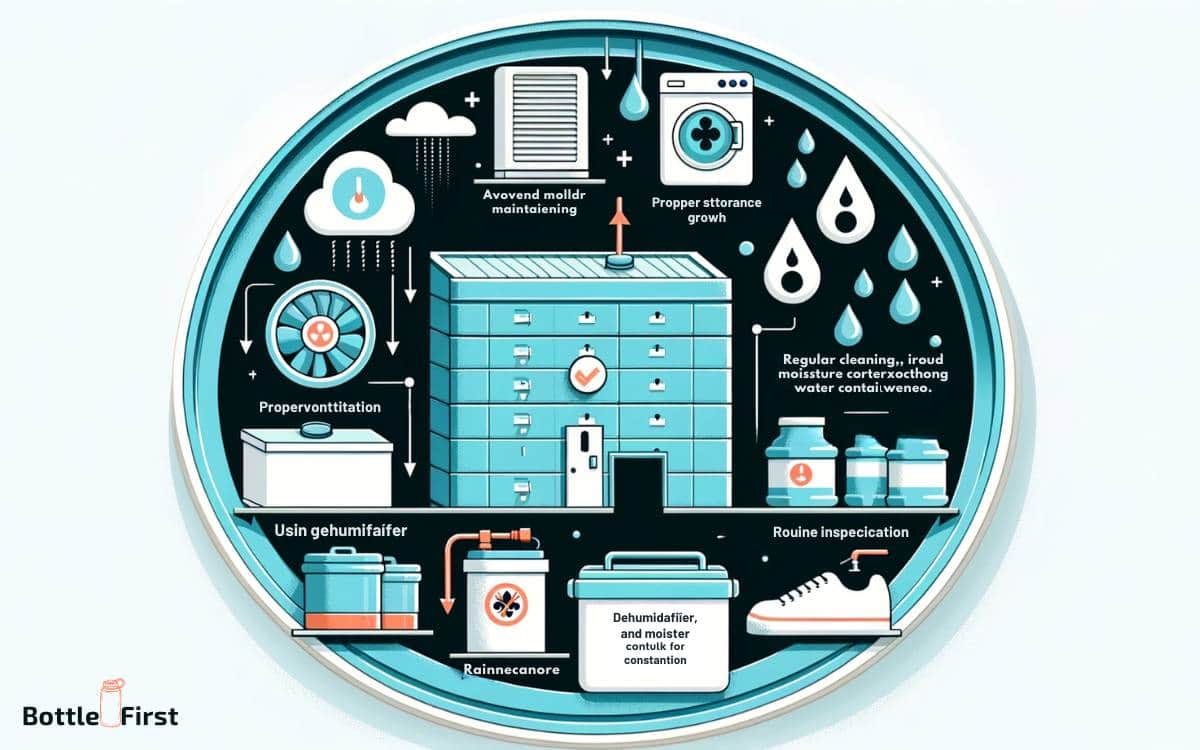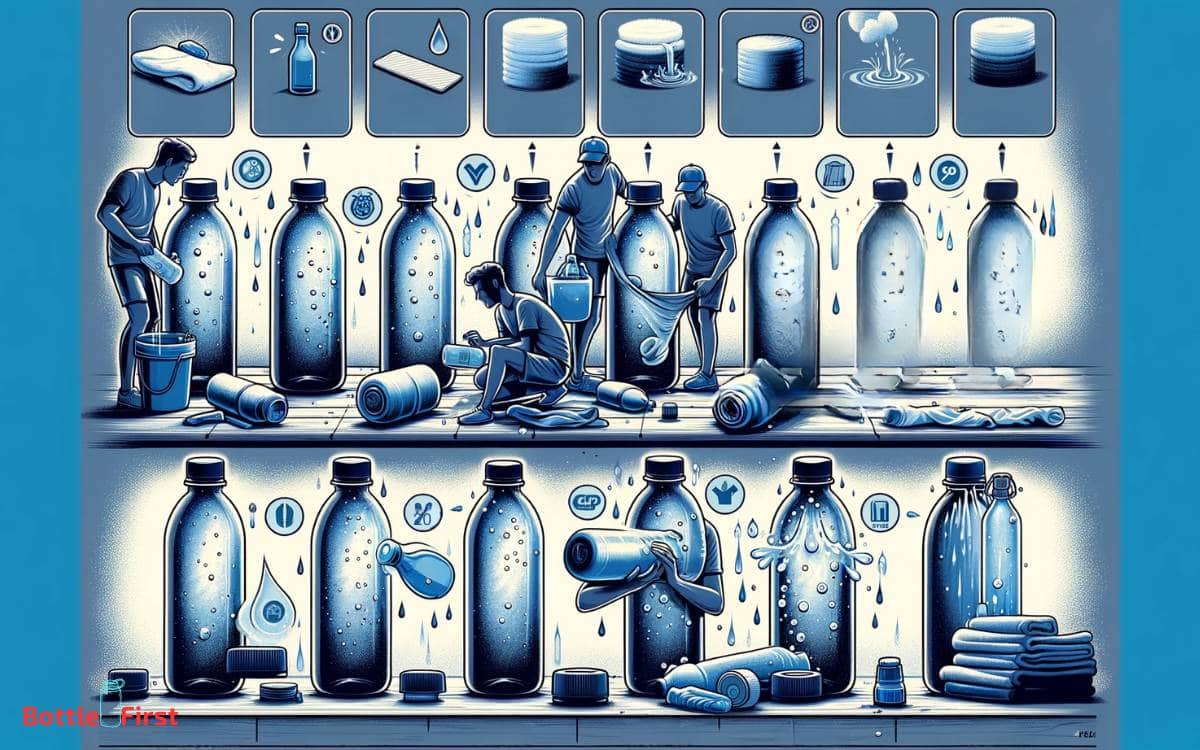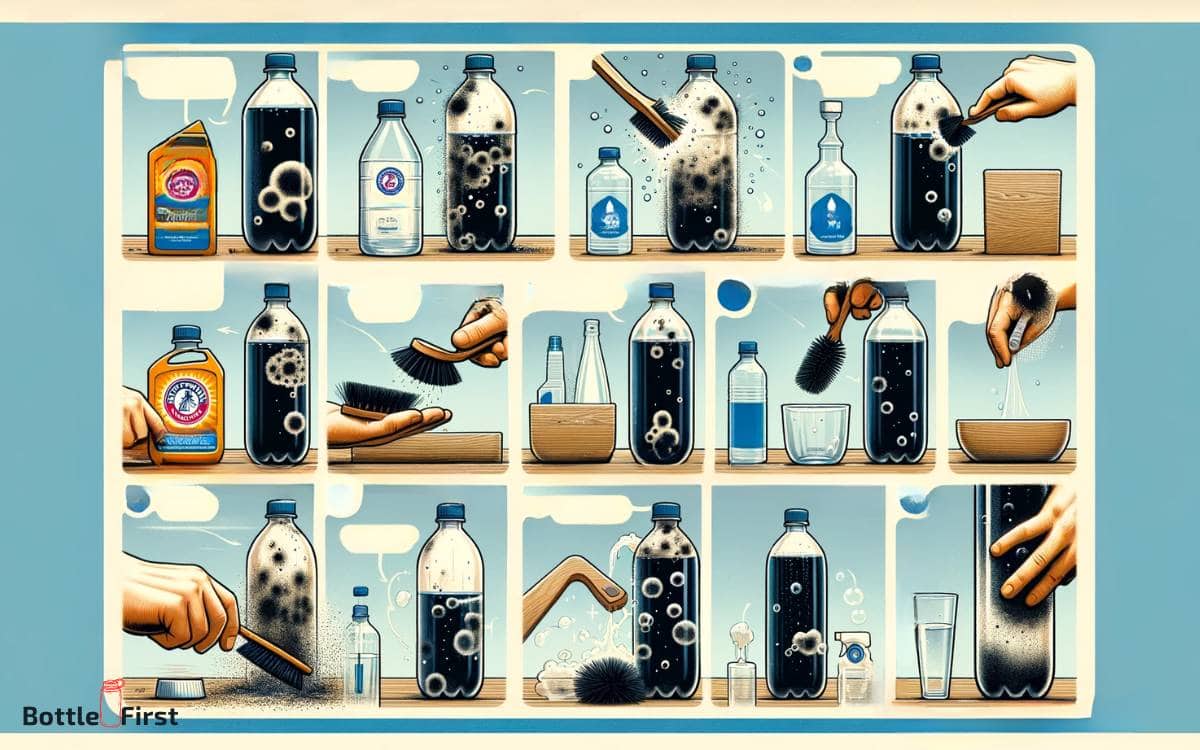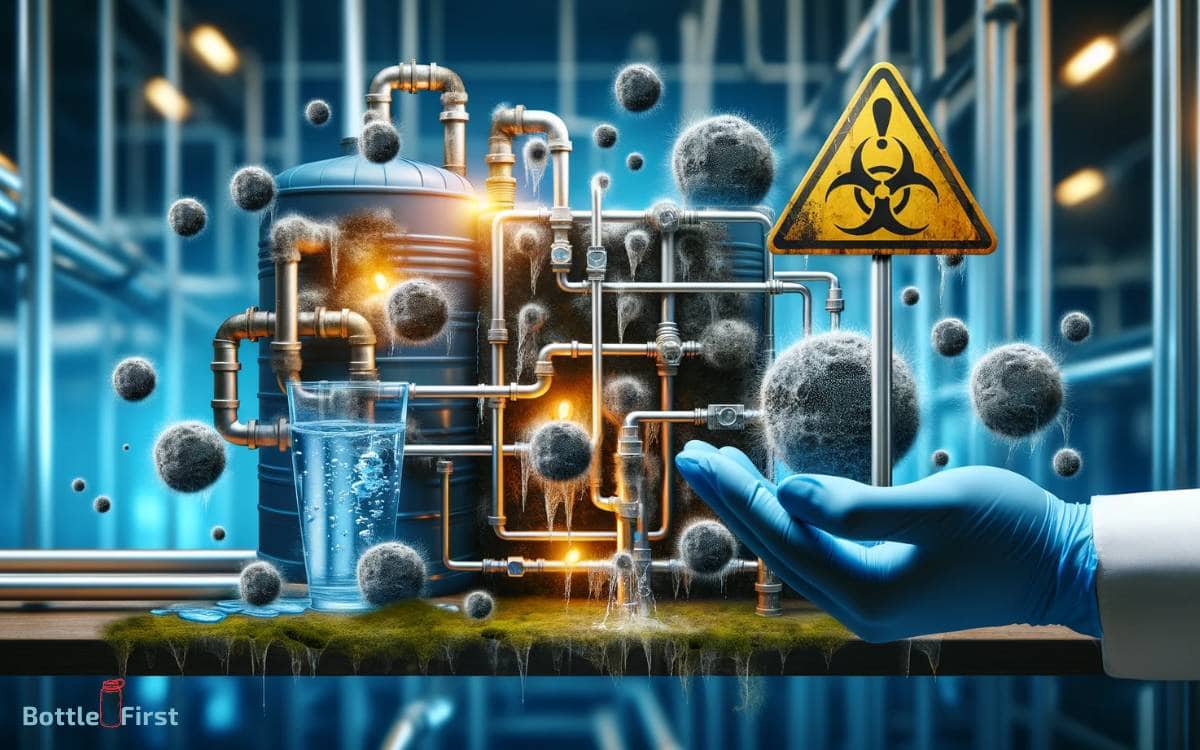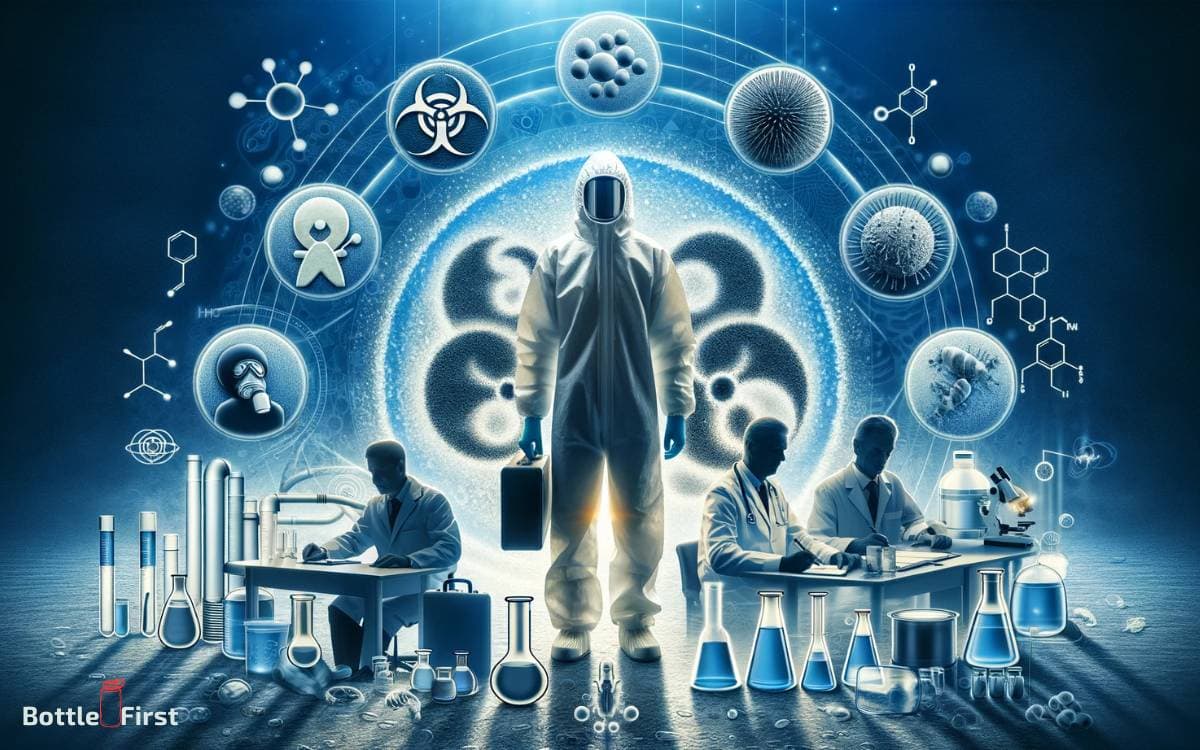Is Black Mold in Water Bottle Dangerous? Yes!
Yes, black mold found in water bottles can be dangerous. Exposure to black mold can lead to health issues, especially for those with weakened immune systems or mold allergies.
It’s essential to regularly clean water bottles to prevent mold growth and ensure water safety.
Black mold, or Stachybotrys chartarum, is a type of fungus that can grow in damp, warm environments, such as a water bottle that hasn’t been properly cleaned.
When people talk about the dangers of black mold, they are typically referring to the potential health risks it poses, which include:
For example, someone who drinks from a mold-infested water bottle might experience symptoms like coughing, sneezing, or a sore throat.
Ensuring your water bottle remains free from black mold is critical for your health. Adopt diligent cleaning routines and inspect your bottles often to maintain a safe hydration source.
Key Takeaway
Understanding Black Mold
The presence of black mold in water bottles can pose potential health risks and requires a thorough understanding of its characteristics and impact.
Black mold, scientifically known as Stachybotrys chartarum, thrives in damp and dark environments.
It can produce mycotoxins which, when ingested, can lead to various health issues including respiratory problems, fatigue, and headaches.
Understanding the growth conditions of black mold is crucial for preventing its proliferation. Innovations in packaging materials and water bottle design can play a critical role in preventing the growth of black mold.
Utilizing materials that inhibit mold growth and designing water bottles to minimize moisture accumulation can be innovative solutions to mitigate the risk of black mold contamination.
Health Risks and Symptoms
Potential health risks and symptoms associated with black mold in water bottles can manifest as respiratory problems, fatigue, and headaches due to the ingestion of mycotoxins produced by Stachybotrys chartarum.
If you suspect black mold in your water bottle, be mindful of the following:
- Respiratory Issues: Persistent coughing, wheezing, or shortness of breath may indicate exposure to mold spores, leading to respiratory problems.
- Fatigue: Mold exposure can cause unexplained tiredness and lethargy, impacting daily activities and overall well-being.
- Headaches: Frequent or worsening headaches without a clear cause could be a sign of mold-related health issues.
- Allergic Reactions: Allergies, such as sneezing, runny nose, and itchy eyes, may also occur as a result of mold exposure.
Being aware of these symptoms can help in early identification and prompt action to address potential health concerns.
Impact on Drinking Water Quality
When black mold contaminates a water bottle, it can impact the quality of the drinking water. This can pose a risk to health, especially for individuals with weakened immune systems.
Understanding the health risks associated with mold in drinking water and effective water purification methods is crucial in addressing this issue.
Health Risks of Mold
Several studies have demonstrated that the presence of mold in drinking water can pose significant health risks.
Mold in drinking water can have various health implications, impacting the quality of water and posing potential risks to consumers.
Here are some of the health risks associated with mold-contaminated drinking water:
- Respiratory Issues: Mold spores in water can lead to respiratory problems when ingested or inhaled.
- Allergic Reactions: Individuals may experience allergic reactions such as skin rashes, itching, or hives.
- Digestive Problems: Ingesting mold-contaminated water can cause digestive issues such as nausea, vomiting, or diarrhea.
- Weakened Immune System: Prolonged exposure to mold in drinking water may weaken the immune system, making individuals more susceptible to infections.
It is crucial to address mold contamination in drinking water to ensure the safety and well-being of consumers.
Water Purification Methods
Water purification methods play a critical role in ensuring the quality and safety of drinking water through the removal of contaminants and impurities.
Innovative technologies such as ultraviolet (UV) purification, reverse osmosis, and activated carbon filtration are revolutionizing the way we purify water.
UV purification utilizes ultraviolet light to deactivate bacteria, viruses, and other harmful microorganisms, ensuring water safety without the use of chemicals.
Reverse osmosis employs a semipermeable membrane to remove impurities at the molecular level, producing exceptionally clean drinking water.
Activated carbon filtration effectively eliminates organic compounds, chlorine, and other pollutants, enhancing the taste and odor of water.
These advancements in water purification methods not only ensure the removal of potential health hazards but also contribute to providing clean and refreshing drinking water.
Prevention and Maintenance Tips
To prevent the growth of black mold in water bottles, it is important to regularly clean and sanitize the bottles using hot, soapy water.
Proper storage techniques, such as allowing the bottles to fully dry before sealing them, can also help prevent mold growth.
Additionally, it is crucial to regularly inspect the bottles for any signs of mold and promptly address any issues to ensure the safety of the drinking water.
Regular Bottle Cleaning
Regular cleaning and maintenance of water bottles is essential to prevent the growth of black mold and ensure the safety of the drinking water.
To maintain your water bottle and prevent the buildup of mold, consider the following tips:
- Use a bottle brush and mild detergent to clean the bottle thoroughly after each use. Pay close attention to areas where moisture can accumulate, such as around the rim and lid.
- Rinse the bottle with hot water and allow it to air dry completely to prevent mold growth.
- Consider using a dishwasher-safe water bottle and wash it regularly in the dishwasher to ensure thorough cleaning.
- Periodically sanitize the water bottle with a mixture of water and white vinegar to eliminate any potential mold spores.
By employing these maintenance practices, you can ensure the cleanliness and safety of your water bottle. Moving forward, let’s explore proper storage techniques for water bottles.
Proper Storage Techniques
It is essential to consistently store your water bottle in a clean, dry environment to prevent the growth of black mold and maintain its safety for use.
When not in use, ensure the water bottle is completely dry before storing it. Consider investing in a bottle specifically designed for easy cleaning and drying to prevent moisture buildup.
Opt for storage in well-ventilated areas and avoid leaving the bottle in direct sunlight, as heat and humidity can create an ideal environment for mold growth.
Additionally, utilizing a storage bag or case designed to promote air circulation can help prevent the buildup of moisture.
Proper storage techniques are crucial for preventing black mold in your water bottle.
In the next section, we will discuss how to inspect for mold to ensure your water bottle remains safe for use.
Inspect for Mold
Regularly inspecting your water bottle for mold is a crucial maintenance practice to ensure its safety for use. Mold growth in water bottles can pose health risks and affect the taste of the water.
Here are four innovative prevention and maintenance tips to help you keep your water bottle mold-free:
- Use BPA-Free Bottles: Opt for water bottles made from BPA-free materials, as they are less likely to promote mold growth.
- Clean Thoroughly: Wash your water bottle with hot, soapy water after each use, and use a bottle brush to reach all the nooks and crannies.
- Allow for Proper Drying: Ensure your water bottle is completely dry before sealing it to prevent mold growth.
- Store in a Cool, Dry Place: Avoid leaving your water bottle in warm or damp environments, as these conditions can encourage mold development.
Cleaning and Disinfection Methods
The cleaning and disinfection methods for removing black mold in a water bottle are essential for maintaining a safe and hygienic drinking vessel.
Traditional methods like soap and water are effective for removing visible mold, but may not completely eliminate mold spores.
Innovative approaches involve using natural disinfectants like white vinegar or hydrogen peroxide, which have been shown to effectively kill mold.
For a more advanced solution, ultraviolet (UV) light sanitization can be used to sterilize the bottle, reaching areas that are difficult to clean manually.
Furthermore, specialized mold-removing tablets or solutions specifically designed for water bottles are available in the market, providing an extra layer of assurance.
These advanced methods ensure thorough cleaning and disinfection, safeguarding against potential health risks associated with black mold exposure.
Transitioning into the subsequent section, it is crucial to address contamination concerns to prevent mold re-growth.
Addressing Contamination Concerns
To mitigate potential mold re-growth and ensure ongoing cleanliness, addressing contamination concerns in water bottles is imperative.
Here are four innovative ways to address contamination concerns:
- UV-C Light Technology: Utilize UV-C light technology to effectively kill bacteria, viruses, and mold spores in water bottles, ensuring a high level of cleanliness.
- Antimicrobial Coatings: Implement antimicrobial coatings on the interior surfaces of water bottles to prevent the growth of mold and bacteria, providing a long-term solution for contamination concerns.
- Self-Cleaning Water Bottles: Develop water bottles equipped with self-cleaning mechanisms, such as purification systems or sterilization features, to continuously eliminate contaminants and maintain a hygienic environment.
- Smart Bottles: Introduce smart water bottles with built-in sensors that detect contamination levels and prompt the user to take necessary cleaning actions, ensuring proactive contamination management.
Professional Help and Resources
Seeking professional help and utilizing reputable resources are essential steps in addressing black mold contamination in water bottles.
When dealing with potential health hazards such as black mold, it’s crucial to consult with experts who have the knowledge and tools to effectively assess and remediate the situation.
Professional mold remediation services can provide thorough inspections, testing, and safe removal of black mold from water bottles, ensuring that the problem is addressed comprehensively.
Additionally, reputable resources such as environmental health agencies, scientific research publications, and government websites can offer valuable information on black mold contamination, its potential health effects, and best practices for mitigation.
Embracing innovative solutions and expert guidance is fundamental in safeguarding against the dangers associated with black mold in water bottles.
Conclusion
Black mold in water bottles can pose serious health risks and impact drinking water quality.
It is important to understand the health risks and symptoms associated with black mold exposure, as well as the importance of prevention and regular maintenance.
Addressing contamination concerns through proper cleaning and disinfection methods is crucial. Seeking professional help and utilizing available resources can be as essential as a compass in navigating through the potential dangers of black mold.
